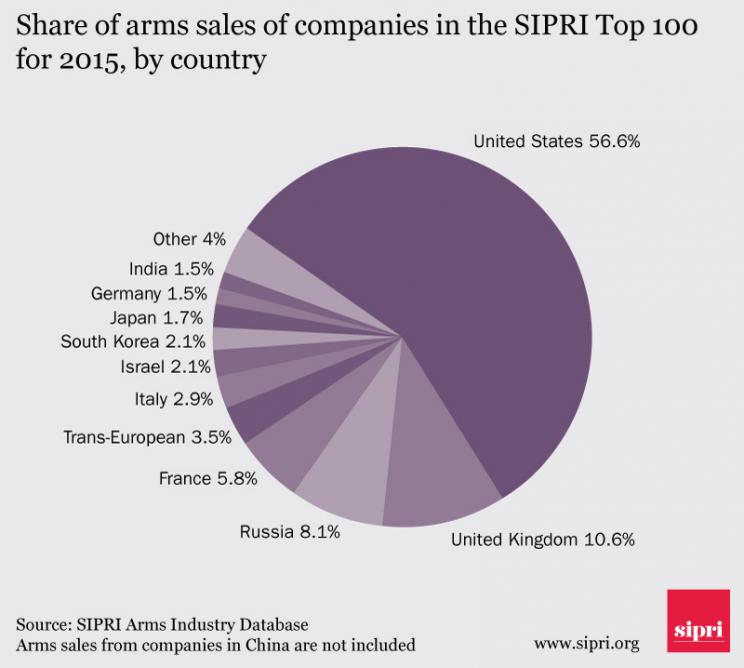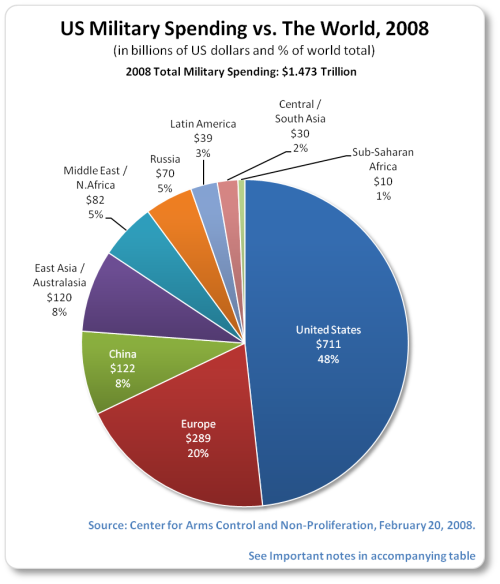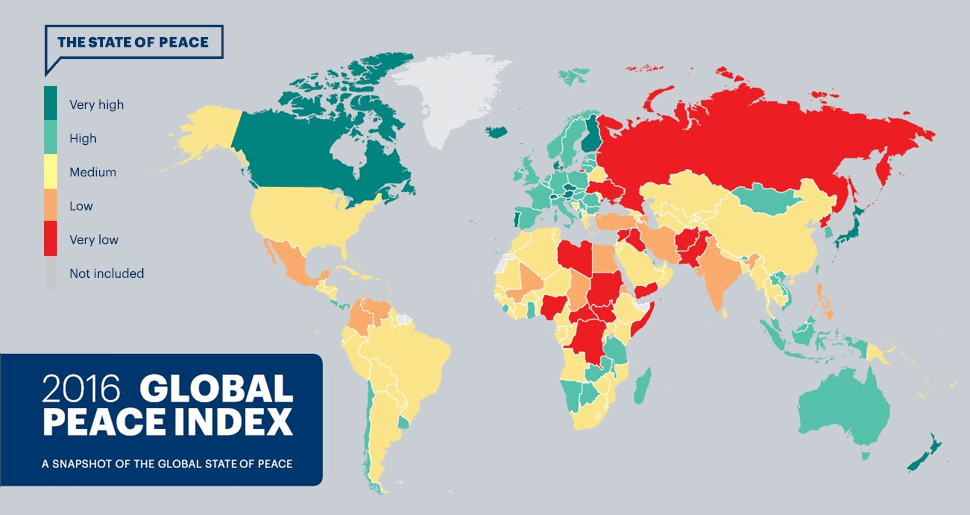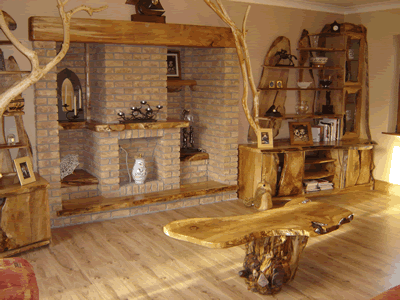Now look at where the arms are being used. Predominantly not where they are being made and exported from.
Environmental Challenges: Scarcity and Conflict in the Natural Environment
As an assignment submission for “Environmental Challenges” course with The University of Leeds through Futurelearn I decided to look at the situation in Lebanon, including the issues surrounding the wider Palestinian/Israeli conflict . This is a very complex conflict so I do not expect a 500 (669) word opinion to provide a solution.
There are four areas that impact on conflict and conflict resolution and transformation.
Personal – the person as an individual human being.
We know from this week’s videos and readings that the peoples of Lebanon do not feel secure in their environment and they do not trust the existing form of government to provide them with the security normally expected from one’s Country. This mistrust has percolated through their relationships with each other and those in neighbouring States. I know from conversations with both Palestinian and Israeli friends and colleagues that individually they would prefer a peaceful co-existence but that current structures do not lend themselves to this.
The object of a Conflict Transformation process is to change this and begin to build an environment of trust and mutual respect among all the peoples of the region.
Relational – communication and relationships.
The root cause of all conflict is the absence of meaningful communication between the conflicted. In order for a resolution to have any chance of success it will be necessary to construct an effective communication system that is impartial and transparent. It will also be necessary to develop new structures within which relationships can develop in a spirit respect, trust and a feeling of a worthwhile common goal.
Structural – root causes of conflict and mechanisms that will promote peace.
The conflict in this immediate region of the Middle East has two strands, ancient, historic and religious and more recently the creation of the State of Israel and the displacement of the Palestinian peoples. This is exacerbated by the involvement of former Colonial interests and the more modern American and Russian proxy power plays. To resolve these root causes will need a two pronged process
- Mechanisms that will allow the peoples of the region to have freedom to practice their religion, to work together to promote region wide economic growth and a peaceful and clean environment in which to live and raise their families
- International Agreement by the major powers to support these mechanisms and to guarantee the security of the total region and not just their preferred sections within the region
Cultural – the cultural patterns that contribute to conflict and the cultural setting for dealing with conflict.
The biggest area of cultural conflict in the region is religion and the cultural mechanisms that have been constructed to continue to allow the peoples of the region to identify exclusively with their particular belief structure. i.e. “Confessions” Considering that all of the religions profess belief in the same God and are based on some version of “Love thy Neighbour as thyself” A mechanism for allowing all people of religion or none to practice their beliefs in mutual respect for each other must be part of the solution.
How to turn the above observations into reality.
Declare Lebanon and Israel, including the disputed regions, and Jordon/Palestine as a common region for the promotion of something similar to the four freedoms that currently form the backbone of The European Union Policy http://www.europeanpolicy.org/en/european-policies/single-market.html
This does not mean loss of Sovereignty for any of the existing states just an agreement to share responsibility for promoting the economic and cultural development of the region. Soft instead of hard borders.
Under the control of the UN, the global powers currently involved in protecting their preferred section of the region, guarantee the autonomy of the whole region and commit to promoting and protecting the four freedoms.
A regional constitution constructed under the auspices of the UN to include an article that not only offers each religion, or their variants, complete freedom of worship but promotes the concept of tolerance of difference, based on the unique position the region has as the birthplace of the three main Monotheistic religions Judaism, Christianity and Islam.
While researching the above came across this very interesting article. “What does Islam and the Quran say about loving your neighbour” http://hubpages.com/religion-philosophy/What-Islam-says-about-loving-thy-neighbor

Engaging with the local population during the development of major projects
 How important is it to engage with local populations when developing controversial oil and gas projects? Royal Dutch Shell and the Norwegian Government’s Statoil learned to their cost that it is very important. They didn’t engage and it cost them 12 years and €2.6bn
How important is it to engage with local populations when developing controversial oil and gas projects? Royal Dutch Shell and the Norwegian Government’s Statoil learned to their cost that it is very important. They didn’t engage and it cost them 12 years and €2.6bn
Gas from the Corrib Gas project was originally expected to flow from the field in 2003. The project is now likely to be 12 years behind the original schedule and the outlay will be €3.4bn, more than four times the initial estimate of €800m
 The Corrib gas field was discovered off the west coast of Ireland in 1996. Following that discovery a consortium, led by Enterprise Energy Ireland Ltd., applied for permission to develop the field. In 2002 the Royal Shell Group acquired Enterprise Energy Ireland Ltd. and its interest in the Corrib Gas field. The Shell Group, through its subsidiary Shell E&P Ireland (SEPIL), took the lead in the development of the project on behalf of its partners (Statoil and Marathon)
The Corrib gas field was discovered off the west coast of Ireland in 1996. Following that discovery a consortium, led by Enterprise Energy Ireland Ltd., applied for permission to develop the field. In 2002 the Royal Shell Group acquired Enterprise Energy Ireland Ltd. and its interest in the Corrib Gas field. The Shell Group, through its subsidiary Shell E&P Ireland (SEPIL), took the lead in the development of the project on behalf of its partners (Statoil and Marathon)
The first announcement of the project was an item in the Catholic Church Parish Newsletter in early April 2000 telling of the ‘coming bonanza’. Enterprise Energy Ireland (EEI), as the project leader was then, held a few presentations in local pubs. Once the community became aware of the nature of these events the public meetings ended except for some set pieces by the Rural Environment Protection Scheme (REPS), which were well guarded by numbers of police: in general, especially after the oral hearings of 2002, Shell would only have meetings with sympathisers or with one or two people at a time. Irish Government Minister Fahy and officials and experts had a public get-together with the community in a hotel, which was videoed without their consent. The more they tried to advance the cause the more obvious the loopholes and dangers became.
Initial enthusiasm for the project turned gradually to serious concerns, especially when in June 2005 Shell sought a committal order for the five main protestors. They were jailed on 29th June 2005 for civil contempt of court after refusing to obey a temporary court injunction, forbidding them to interfere with work being undertaken by Shell on their land. These men became known as The Rossport 5
Defending his company’s stance on the imprisoning Shell Ireland’s CEO Andy Pyle said: “The fact is that we’ve gone through a process, and we have five people who don’t like the outcome.”
There were protests all over Ireland during the period of the men’s imprisonment with filling stations of Shell and its junior partner Statoil being picketed and blockaded by both political activists and ordinary members of the public. The protests intensified to such an extent that after 94 days Shell applied to the High Court to have the injunction lifted
On release “The Rossport 5” issued the following statement
“We remind Shell and their Irish government partner that imprisonments have historically and will always fail as a method to secure the agreement of Irish people.”
“We now call on our supporters to intensify the campaign for the safety of our community and families.
Ongoing, there was minimum contact between the promoters of the project and the community other than some ‘megaphone diplomacy’ until representatives from “Pobal Chill Chomain”, who had come up with a compromise to the conflict, travelled to Norway in 2008. The compromise was to relocate the refinery to an on-land site in Glinsk. The community leaders travelled to Norway with Labour Party president Michael D Higgins, Green Party councillor Niall O Brolchain and Sinn Fein councillor Noel Campbell. The group met Statoil Hydro and outlined their compromise proposal. Statoil commented afterwards that the chances of changing the location of the refinery were close to zero.
The jailing of the Rossport 5 changed middle–ground opinion, prompted people to learn more about the project and heightened local safety and environmental concerns. The perceived failure of, firstly Enterprise Energy Ireland Ltd. and latterly Shell to address these concerns led to mistrust and serious doubts about the information being provided on the safety of the project.
Andy Pyle, Chief Executive of Shell E&P Ireland, has acknowledged that it did not listen enough to local concerns: “mistakes have been made. We regret the part that we played in the jailing of the five men last summer. For the hurt that this caused the local community I am sorry. The Corrib gas partners are fully committed to the project, however, we can only succeed in partnership with the local community.”
A complaint was made to the OECD and although The Irish and Dutch OECD national contact points (NCPs)…found that the Shell-led “consortium” had “shown a willingness” since 2005 to “address health and safety concerns, of which the revised route for the onshore part of the pipeline seems the clearest proof”, the two years between the complaint and the ruling caused more delays and allowed the opposition to the project consolidate their positions. See below.
Specific Instance against Royal Dutch Shell, Statoil and Marathon Oil Corporate for the violations of the OECD Guidelines for Multinational Companies
(Extract)
Because of the truncated and ‘project-split’ nature of the Corrib Development, meaningful public participation as envisaged under this OECD principle has not been possible. The local receiving community has not been in a position to examine, understand and comment on the cumulative and interactive nature of the environmental impacts of the development because these have been unknown.
Only components of the project have been presented at any one time – first, planning permission for the refinery which was granted in 2004, followed by the Pollution Control Licence for the operation of the refinery which was granted in 2007 and, more recently, applications for consents for the construction of a high-pressure production pipeline through a marine and peat environment. This latter process has, as yet, an indeterminate conclusion point.
The full, integrated Development, with all of its cumulative and interactive impact, has never been presented for public consultation and participation.
As well, the enterprises have refused, many times, to provide the community with information on the potential health and safety impacts of their activities. In 2000, Enterprise Energy Ireland didn’t inform the community about the route and the characteristics of the pipeline: “We had no notice at all from them that here was the pipeline route”; “There were no word of pressure in the pipe”.
Concerning the pipeline, according to people’s testimonies: “You got information at your own cost from the Internet and contacting people in other countries. You got no information from Enterprise. At their ‘presentation days’ if you asked one of them a question they’d say, ‘oh I can’t answer that, I’ll put you on to the next guy’. And then the next guy mightn’t be there that day. You constantly do this. They never give a straightforward answer. ‘We’ll take it away and have your answer the next day’. And the next ‘presentation day’, the same thing. Nothing went in. It was just a one-way sound. We talked but they didn’t listen”.
The project publicity machine consistently states that it is open to dialogue and consultation, the reality is the opposite. When the Rossport 5 were released from jail Shell engaged in talks through Peter Cassels as mediator appointed by the Minister Noel Dempsey. While the mediation was on-going and at a time when Shell publicly apologised for jailing the Rossport 5, Andy Pyle, the SEPIL M.D., in an article in the Western People (a local newspaper) declared that mediation with the Rossport 5 would not result in a change to the project.
Conclusions
Would a better community engagement program from day one have brought “The Rossport 5” on side? That’s hard to predict but the stance taken by the original promoters and inherited and continued by Shell is most certainly a demonstration of how not to engage with a community for a project of this complexity and value.
References
http://irishoilandgas.wordpress.com/2010/09/27/shell-meets-its-match-in-the-rossport-five/
http://www.breakingnews.ie/ireland/rossport-5-issue-statement-223304.html
http://en.wikipedia.org/wiki/Rossport_Five
Shale Gas and Regulation (UK)
The following is an extract relating to the UK from Shale gas – an EU analysis
Elizabeth Shepherd , Eversheds: June 2012, updated December 2013
The UK is arguably the best informed Member State in that it was the first to carry out a detailed study which concluded that there is no direct risk to water aquifers, so long as the well-casing is intact. Concerns were however raised following seismic activity near Cuadrilla’s drilling site in Blackpool, in the North West of England in April/May 2011 which led to a temporary moratorium.
2013 has been an important year for shale gas producers in the UK following the lifting of the temporary moratorium in December 2012. The lifting of the moratorium was subject to new controls to mitigate the risks of seismic activity. These new controls include a traffic light system to categorise seismic activity and direct appropriate responses. The Government’s decision followed analysis of detailed studies and advice from leading experts. At the same time the Government announced that there would be a consultation on how the current licensing regime could be modified to support the particular characteristics of shale gas developments and that a tax regime specific to the shale gas industry would be developed.
Since December 2012 the Government has continued to demonstrate its support for shale gas. In June 2013 the UK Government announced that the 14th onshore licensing round would be launched in 2014 (this is the competitive process by which the UK allocates permits to explore for and extract petroleum).
In July 2013 the Government published a consultation paper on proposals for a tax regime for shale gas. In this consultation the Government recognised the potential for shale gas to increase energy security, create jobs and generate substantial tax revenue. The proposals in the consultation aim to unlock early investment and support industry development.
At the end of July draft technical guidance for onshore oil and gas exploratory operations was released for public consultation. The Government has also produced guidance on how shale gas (and other onshore oil and gas) developments should proceed through England’s planning system.
The Chancellor , in his Autumn Statement on 5 December 2013, announced a new tax allowance to kick start the exploitation of onshore oil and gas (including shale gas). The allowance makes the effective tax rate for shale gas projects lower than that in the US and the most competitive in Europe. Legislation to implement the allowance is expected to be included in the Finance Bill 2014.
The United Kingdom Onshore Operators Group (UKOOG) (the representative body for UK onshore oil and gas companies including exploration, production and storage) has also published industry guidelines covering best practise for shale well operations in the UK. The Department for Energy and Climate Change (DECC), the Health and Safety Executive (HSE), the Environment Agency (EA) and the Scottish Environment Protection Agency (SEPA) provided input into these guidelines. The guidelines also provide a template for the public disclosure of hydraulic fracturing fluid composition.
UKOOG has also entered into a Memorandum of Understanding with Water UK (which represents the UK water industry) to ensure their respective members co-operate through the shale gas exploration and extraction process. The memorandum’s key aim is to give the public greater confidence and reassurance that everything will be done to minimise hydraulic fracturing’s effects on water resources and the environment.
Overall the UK government remains positive and whilst the legal framework is being clarified the overall approach of the UK appears to be that it does not see the need for further EU legislation on shale gas activity, it simply wants the freedom to explore and understand the extent of its shale gas opportunity. In spite of this political support the rate of exploration has been slow and no further hydraulic fracturing activities have been undertaken in the UK since the moratorium was lifted. Public debate regarding onshore hydrocarbon production (both conventional and unconventional) has increased and there have been high profile protests highlighting public concern regarding hydraulic fracturing.
Taken from the website of SHIP (Shale gas Information platform) produced by the German Research Centre for Geosciences
Energy Security and Shale Gas
12th February 2015
Comment by Brendan and replies from other learners at FutureLearn
Brendan Palmer
I spent some time thinking about a contribution on this. Most of my thoughts are similar to the majority already posted so I will make a general observation based on my experience.
I have been recycling electronic waste for 18 years, since before anyone even recognised it as an issue and I can categorically tell this forum that all people love to talk the green talk and be environmentally responsible, until they are asked to pay….
I have also noticed that the focus on renewable energy flares and wanes as the price of oil travels above and below $80 a barrel.
As President Bill Clinton said “It’s the economy stupid” the environment comes second
-
John Connett
Life existed on this planet long before men devised money and economics. For life to survive it needs a habitable environment. Make that environment uninhabitable and almost no amount of money will help you, unless you’re very good friends with Elon Musk (http://aeon.co/magazine/technology/the-elon-musk-interview-on-mars/).
-
Liz kerry
The economy depends on the environment not the other way round. The earth could easily shrug us off and start again!
-
Brendan Palmer
In case there is a misunderstanding about my stance on this. I absolutely agree that we have to do something about a sustainable environment. My business is about sustainable management of wastes. People don’t like to think of waste but it is a fact of life and wishing it away doesn’t work.
I enjoy the part of our business that looks at, discovers and implements better ways of handling one of our more toxic wastes, WEEE or eScrap and Scrap Cars and the unrecyclable plastics that come from these wastes.
My first course of study with FutureLearn was “Sustainability Society and You”
https://www.futurelearn.com/courses/sustainability-society-and-you which is well worth doing if it comes up againTo restate my earlier post
People love to talk the green talk and proclaim environmental responsibility , until they are asked to pay, then it’s suddenly, “Save me Lord, but not just yet”Many of the comments posted here talk of what WE must do. Think about that, how much are YOU prepared to pay for a sustainable future
-
Holly McCain (Facilitator – Shale Gas and Fracking)
Brendan – I’m glad you liked the “Sustainability Society and You” FutureLearn course as that is another one created by the University of Nottingham. As far as I know it will be re-run in a few months. It’s a great course for anyone wanting an introduction to issues relating to sustainability.
Introducing Brendan Palmer to the Futurelearn M.O.O.C. Shale Gas and Fracking With The University of Nottingham
February 2nd 2015
My first MOOC with FutureLearn was the UoN “Sustainability and you” in January 2014
Currently I am involved in recycling of Electronic Waste (WEEE). I am also involved in a project to use sealed vessel Pyrolysis/Gasification to create SynGas (Synthetic gas) from the unrecyclable residues from the plastics recovery processes in the WEEE and Automobile Shredder industries, so gas and the environment are very much in my space right now
In doing some research on the subject of fracking it seems to me that disinformation is the order of the day, both on the pro and anti side.
The against side says that “up to 600 chemicals are used”
The Pro side says The chemicals that gas companies use – which can include – water, sand, salt, citric acid, benzene or lead,
I have not been able to find any information on exactly what chemicals are used and in what mix or concentrates, which I suspect could be one of the major environmental issues surrounding the process
I have to admit that the kind of people trotted out by the US media claiming the fracking has made them ill are less than convincing (I regularly expect a duelling banjo to start up in the background)
I am looking forward to getting some real facts on the subject, which will allow me to take a risk v reward position
Moving Milk, in Glass Bottles or Recyclable Packaging
Brendan Palmer February 13th 2014
 From time to time we hear nostalgic regrets about the demise of the lowly milk bottle, the clink of the glass in the early morning, the washing of the bottles and putting them outside the door, as the last daily action before retiring for the night, a daily ritual that has been promoted as the ultimate in environmentally friendly consumption.
From time to time we hear nostalgic regrets about the demise of the lowly milk bottle, the clink of the glass in the early morning, the washing of the bottles and putting them outside the door, as the last daily action before retiring for the night, a daily ritual that has been promoted as the ultimate in environmentally friendly consumption.
Or is it? The following numbers relate to large movements of milk using trucks capable of a 24 tonne payload.
To move 23,500 litres of milk using Tetra Pac Cartons or plastic bottles means transporting a total of 24 tonnes. 23.5 tonnes of outward payload (Milk) and 500kg of packaging, . This packaging can be recycled in our green recycling bins
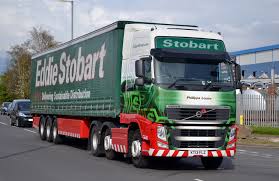 To deliver 23,500 litres of milk using glass bottles, each bottle weighing 0.35kg and containing a half litre of milk (1 pint), would mean an outward payload of 49,950kg (49.9t) and a return payload of 16,450kg (16.5t) of empty glass. We now need two trucks to do the delivery (if we are limited to 24 tonnes per truck, we can’t deliver all the milk) To simplify the calculation let’s just send an extra 24 tonne truck along with the delivery and then have it collect the empty glass for return to the refilling plant.
To deliver 23,500 litres of milk using glass bottles, each bottle weighing 0.35kg and containing a half litre of milk (1 pint), would mean an outward payload of 49,950kg (49.9t) and a return payload of 16,450kg (16.5t) of empty glass. We now need two trucks to do the delivery (if we are limited to 24 tonnes per truck, we can’t deliver all the milk) To simplify the calculation let’s just send an extra 24 tonne truck along with the delivery and then have it collect the empty glass for return to the refilling plant.
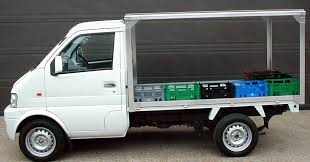 The above of course only gets the milk to the distribution warehouse or supermarket, the extra 16.5 tonnes of glass then has to be transported (although in smaller lots , milk floats etc) to the end user and back again, once they have used the milk.
The above of course only gets the milk to the distribution warehouse or supermarket, the extra 16.5 tonnes of glass then has to be transported (although in smaller lots , milk floats etc) to the end user and back again, once they have used the milk.
Once the glass is returned to the refilling plant, it must first be sent to a washing and testing line to be examined for contaminants or cracks and then transported to the filling lines.
Again for simplicities sake let’s just assume that the milk bottle moves four times for each usage. So for each pint of milk consumed we move 1.4 kg of glass.( 0.35kg per bottle X four movements.)
If each person in Ireland consumed 1 pint of milk per day there would be a need to transport 5600 (Five thousand Six Hundred) tonnes of glass about the place every day
To transport 2 million litres of milk in cartons or plastic bottles requires 50 tonnes of recyclable packaging
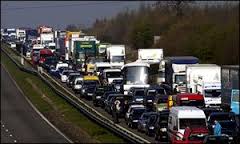 In the UK it would be 80,000 (Eighty Thousand) tonnes of glass per day which would be about 3,500 extra large truck movements per day
In the UK it would be 80,000 (Eighty Thousand) tonnes of glass per day which would be about 3,500 extra large truck movements per day
Apart from the economic cost of moving all this extra weight around, perhaps the environmental consequences require that the lowly milk bottle be left consigned to nostalgia and the happy times when ignorance was bliss
Back-up numbers
Weight of 1 milk bottle = 0.35 kg
Weight of Plastic or Tetra Pak carton= 0.025kg
Weight of one litre of milk= 1kg
A Personal Experience Relating to an Artistic or Cultural Take on Sustainability?
One of a series of Blogs as part of a sustainability study course
Sustainability, society and you: The University of Nottingham
In Ireland, The re-emergence of most of the traditional Irish crafts has accelerated in recent years with a huge number of individuals and small businesses re-learning traditional crafts and applying them to products that can be used in our modern life.
See http://www.giveirishcraft.com/
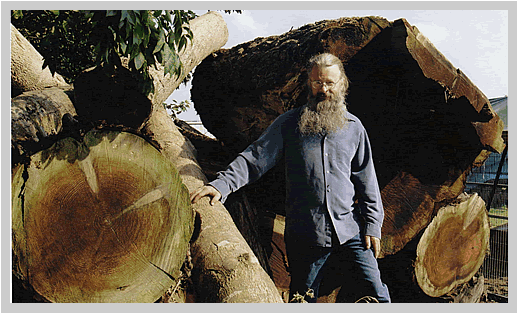 Although not listed on the Give Irish Gifts link, my brother-in law, Paul Moore, is an artist in wood, making everything from small cutting boards to, dining suites, full kitchens and traditional bar fitout. All from native hardwood Irish trees, many of which are the victims of winter storms
Although not listed on the Give Irish Gifts link, my brother-in law, Paul Moore, is an artist in wood, making everything from small cutting boards to, dining suites, full kitchens and traditional bar fitout. All from native hardwood Irish trees, many of which are the victims of winter storms
His style is pretty unique as he does very little forming, preferring to let the nature of the original tree flow through his pieces. Although Paul could make 20 coffee tables from one tree, each one of those coffee tables is completely unique and cannot be copied.
Click here for full Paul Moore Furniture Design Site

A 400 year old tree being converted to a piece of furniture that will last for up to another 400 years and even then can be used as biodegradable compost for the next tree to take 400 years to grow. Perhaps a definitive description of sustainability
We Didn’t do the Green Thing Back Then
Checking out at the supermarket, the young cashier suggested to the much older woman, that she should bring her own grocery bags because plastic bags weren’t good for the environment
The woman apologised and explained, “We didn’t have this ‘green thing’ back in my earlier days.”
The young cashier responded, “That’s our problem today – your generation did not care enough to save our environment for future generations.”
She was right — our generation didn’t have the ‘green thing’ in its day.
Back then, we returned milk bottles, lemonade bottles and beer bottles to the shop. The shop sent them back to the plant to be washed and sterilised and refilled, so it could use the same bottles over and over. So they really were recycled.
(Brendan Palmer comments: This is rubbish, see my blog Moving Milk in Glass Bottles.
But we didn’t have the “green thing” back in our day.
Grocery shops bagged our groceries in brown paper bags, that we re-used for numerous things, most memorable besides household bags for rubbish, was the use of brown paper bags as book covers for our schoolbooks. This was to ensure that public property (the books provided for our use by the school), was not defaced by our scribblings. Then we were able to personalise our books on the brown paper bags.
But too bad we didn’t do the “green thing” back then.
We walked up stairs, because we didn’t have a lift in every supermarket, shop and office building. We walked to the local shop and didn’t climb into a 300 horsepower machine every time we had to go half a mile.
But she was right. We didn’t have the “green thing” in our day.
Back then, we washed the baby’s terry towel nappies because we didn’t have the throwaway kind. We dried clothes on a line, not in an energy-gobbling machine burning up 3 kilowatts – wind and solar power really did dry our clothes back in our early days. Kids had hand-me-down clothes from their brothers or sisters, not always brand-new clothing.
But that young lady is right; we didn’t have the “green thing” back in our day.
Back then, we had one radio or TV in the house – not a TV in every room and the TV had a small screen the size of a big handkerchief (remember them?), not a screen the size of Scotland In the kitchen. We blended and stirred by hand because we didn’t have electric machines to do everything for us. When we packaged a fragile item to send in the mail, we used wadded up old newspapers to cushion it, not Styrofoam or plastic bubble wrap. Back then, we didn’t fire up an engine and burn petrol just to cut the lawn. We pushed the mower that ran on human power. We exercised by working so we didn’t need to go to a health club to run on treadmills that operate on electricity.
But she’s right; we didn’t have the “green thing” back then.
We drank from a tap or bubbler when we were thirsty, instead of using a cup or a plastic bottle every time we had a drink of water. We refilled writing pens with ink instead of buying a new pen, and we replaced the razor blades in a razor instead of throwing away the whole razor just because the blade got dull.
But we didn’t have the “green thing” back then.
Back then, people took the bus and kids rode their bikes to school or walked instead of turning their Mums into a 24-hour taxi service in the family’s £50,000 ‘People Carrier’ which cost the same as a whole house did before the “green thing.” We had one electrical outlet in a room, not an entire bank of sockets to power a dozen appliances and we didn’t need a computerised gadget to receive a signal beamed from satellites 23,000 miles out in space in order to find the nearest Pub!
But isn’t it sad that the current generation laments how wasteful we old folks were just because we didn’t have the “green thing” back then?
Please forward this on to another selfish old person who needs a lesson in conservation from a smart arse young person…
We don’t like being old in the first place, so it doesn’t take much to piss us off…especially from a tattooed, multiple pierced smartarse who can’t work out the change without the cash register telling them how much it is!
Here endeth the bloody lesson!
Sustainability strategies and plans:
One of a series of Blogs as part of a sustainability study course
Sustainability, society and you: The University of Nottingham
M&S have improved energy efficiency in their stores by 23% and their warehouses by 24%, relative to 2007 (M&S, 2011). M&S have also met their target to improve the fuel efficiency of their delivery fleets by 20% (M&S, 2011). Their total carbon emissions reduced by 13% from 2007 whilst their sales floor footage continued to grow (M&S, 2011). This demonstrates that M&S have been able to develop their business while at the same time “incorporate a range of sustainability policies, including improvements in energy efficiency.” !!
Importantly, M&S have proved that sustainability makes good business sense, by generating a net benefit of over £70m through Plan A in 2011.
The above extracts are the “new wave” way of presenting what was traditionally known as cost savings and could be restated in the company’s annual report as follows
Costs
Stores energy down 23%
Warehouse energy down 24%
Transport costs down 20%
Total savings £70m
When a business sells an item, the amount of the sale goes to the top of the Profit and Loss column. All the costs relating to making that sale are then deducted and the remaining amount goes to “The Bottom Line” this is the net margin. The Nett Margin for M&S is 4.96% so for every £100 of turnover, M&S get £4.96 http://www.google.co.uk/finance?cid=15957148
Savings on the other hand go straight to the bottom line so in order to put £70m onto the bottom line M&S would have to sell an extra £1.4bn (billion) of goods. Their revenues for 2013 were £10bn http://corporate.marksandspencer.com/documents/publications/2013/annual_report_2013.pdf
So, in order for them to make £70million from sales as opposed to savings they would have to increase the size of their business by 14%
Of course the reduction in energy usage is a good thing and being able to service their customers with a footprint that is 14% smaller than it might be is a welcome contribution to overall sustainability, but lets us be very certain that in this context “sustainability” is the marketing word for reducing costs, which is what every business that hopes to survive does on a constant basis.
The real sustainability issue is this, should 70% of the food we consume be controlled by 4/5 Supermarket chains, and what effect does their need to cut costs have on the quality of the food that they provide for us to eat.
I have been doing research on this subject for another blog I write called “A city boy on farming” and the story is not good
